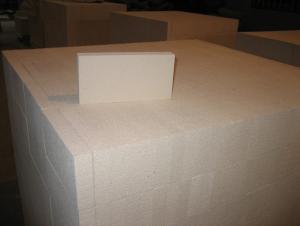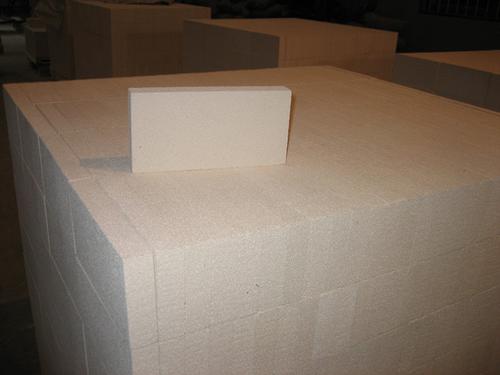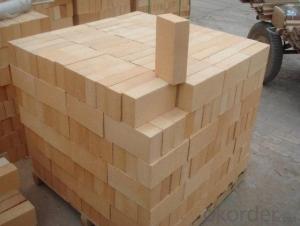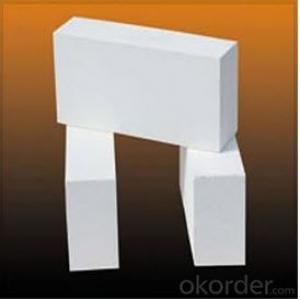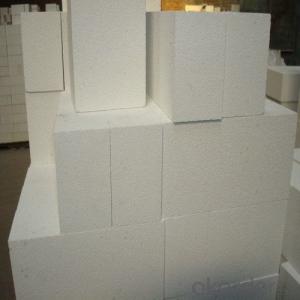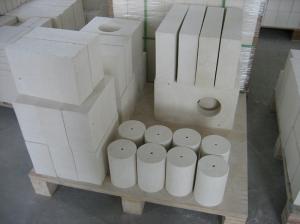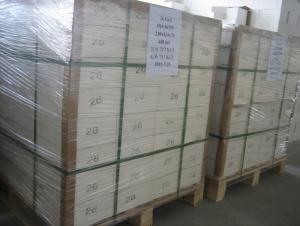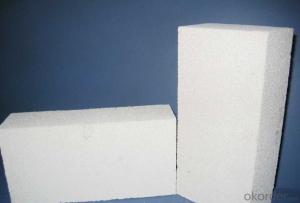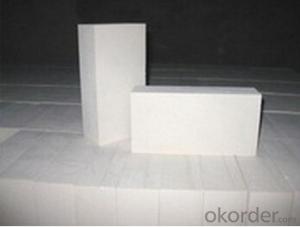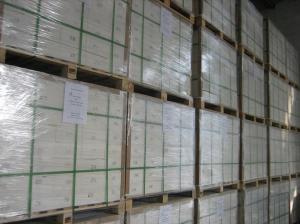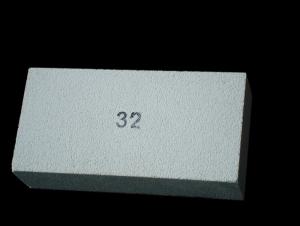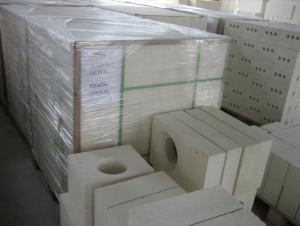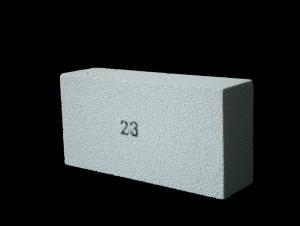Insulating Fire Brick - Refractory Mullite Insulating Refractory Brick JM 38
- Loading Port:
- Shanghai
- Payment Terms:
- TT OR LC
- Min Order Qty:
- 20 m.t.
- Supply Capability:
- 20 m.t./month
OKorder Service Pledge
OKorder Financial Service
You Might Also Like
Okorder series heat insulation brick
Okorder series thermal insulation brick is an effective, energy saving, low carbon, environmental protection advanced, according to the ASTM standard manufacturing products. Okorder series products have all kinds of materials in the field of metallurgy, industrial furnaces, aluminum, the best Li Ning petrochemical and insulation, electric power and glass ceramics. They can be used as part of an insulation or not to melt. Products have been widely used in the following furnace, achieved satisfactory results.
Application of heat preservation brick
Metallurgical Industry: blast furnace, hot blast furnace, heating furnace, etc..
Petrochemical Industry: ethylene cracking furnace, hydrogen furnace, the main furnace, heating furnace, etc..
Ceramic industry: roller kiln, kiln, etc..
Glass industry: glass furnace regenerator, etc.
Carbon industry: carbon furnace, etc..
Aluminum electrolysis industry: aluminum reduction cell, etc.
Other industries: tunnel kiln, shuttle kiln, etc..
Advantages of heat insulation brick
Low thermal conductivity: many air holes will bring good thermal insulation effect, energy saving.
High crushing strength: high crushing strength, volume stability.
Low heat storage: small heat storage, absorb more heat, energy-saving effect is obvious.
Chundu: High-speed Rail, low content of alkali metal impurities.
Accuracy: the size of the brick machining precision, cutting and grinding the special shape, speed up the brick.
Insulating brick
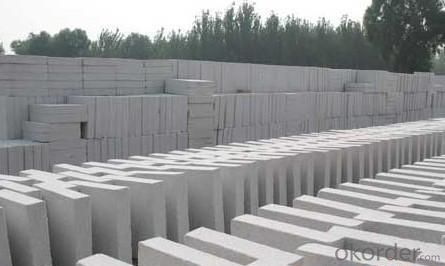
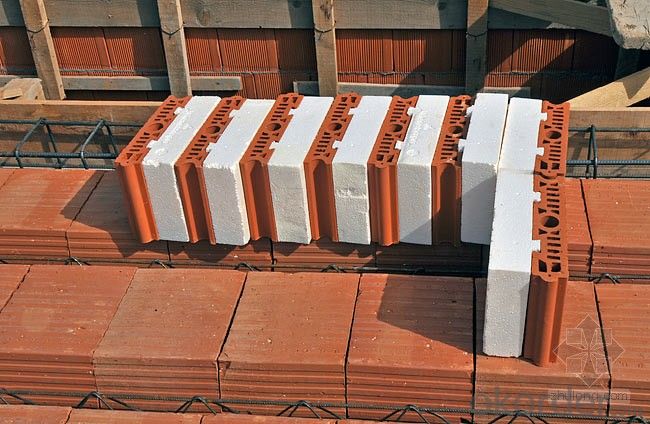
- Q: Are insulating fire bricks resistant to sulfates?
- Insulating fire bricks are generally resistant to sulfates. These bricks are made of high-alumina or silica materials, which have good chemical resistance properties. Sulfates are a type of chemical compound that can react with certain materials and cause degradation. However, insulating fire bricks are designed to withstand high temperatures and harsh chemical environments, including exposure to sulfates. They are often used in applications such as furnaces, kilns, and incinerators where they may come into contact with sulfates. Nevertheless, it is important to consider the specific composition and quality of the insulating fire bricks, as well as the concentration and duration of sulfate exposure, to ensure their long-term performance and durability.
- Q: Are insulating fire bricks resistant to thermal fatigue?
- Insulating fire bricks exhibit remarkable resistance to thermal fatigue. These bricks are purposefully engineered to endure elevated temperatures and thermal cycling without experiencing any cracks or fractures. Composed of refractory materials with exceptional thermal shock resistance, they possess the ability to expand and contract without suffering significant harm. This capacity to withstand thermal fatigue renders insulating fire bricks highly suitable for applications involving extreme temperature fluctuations, such as kilns, furnaces, and other environments with high temperatures.
- Q: Are insulating fire bricks easy to cut or shape?
- Insulating fire bricks are relatively easy to cut or shape compared to other types of bricks. This is primarily due to their lower density and composition, which allows them to be more easily manipulated with standard masonry tools. However, it is important to note that the level of ease may vary depending on the specific type and brand of insulating fire brick. Some may require special tools or techniques for cutting or shaping, while others may be more user-friendly. It is always recommended to consult the manufacturer's instructions or seek professional advice when working with insulating fire bricks to ensure proper cutting or shaping techniques are employed.
- Q: Difference between inorganic insulation material and organic thermal insulation material
- Manufacturing distinction:1, organic insulation materials mainly from petroleum products, including foam polystyrene board (EPS), extruded polystyrene board (XPS), spray polyurethane (SPU) and polystyrene particles. From a nationwide perspective, the organic exterior wall insulation system occupies more than 75% of the current external thermal insulation Market in our country.2, inorganic heat preservation material including expanded perlite, hollow glass beads, rock wool, mineral wool, perlite, glass wool and lightweight block self insulation system, mainly based on inorganic materials such as stone, glass, industrial waste and so on. As the state attaches importance to and requirements of the fire protection safety standards for wall materials, the market share of inorganic thermal insulation materials will be greatly improved.
- Q: How do insulating fire bricks help to conserve energy?
- Insulating fire bricks contribute to energy conservation in several ways. Firstly, these bricks are crafted from materials with high thermal resistance, enabling them to effectively impede heat transfer. When utilized in the construction of furnaces, kilns, or other heat-generating equipment, they create a protective barrier that prevents heat loss to the surroundings. Consequently, this diminishes the amount of energy required to maintain a consistent temperature within the equipment. Furthermore, insulating fire bricks possess low thermal conductivity, meaning they do not readily conduct heat. Consequently, they impede the transfer of heat from the hot side to the cold side, resulting in minimal heat loss and ensuring that more energy is utilized for its intended purpose, rather than being squandered. Moreover, insulating fire bricks possess a high heat capacity, allowing them to efficiently absorb and retain heat. This characteristic proves advantageous as it aids in stabilizing temperature fluctuations by gradually releasing stored heat over time. Consequently, this reduces the necessity for constant energy input to maintain the desired temperature. To summarize, insulating fire bricks aid in energy conservation by reducing heat loss, minimizing heat transfer, and stabilizing temperature fluctuations. By incorporating these bricks into various heat-generating applications, energy consumption can be significantly decreased, leading to cost savings and a more sustainable utilization of resources.
- Q: Can insulating fire bricks be used in high-temperature kilns for pottery?
- Insulating fire bricks possess the capability to be utilized in kilns for pottery that operate at high temperatures. These bricks are specifically engineered to endure elevated temperatures, typically reaching up to 3000°F (1650°C). Their low thermal conductivity allows them to effectively retain heat and provide insulation within kilns. By incorporating insulating fire bricks into high-temperature kilns, a consistent temperature can be maintained throughout the firing process, ensuring the pottery is adequately heated and cooled. Furthermore, the lightweight nature of these bricks facilitates ease of handling and installation within kilns. In conclusion, insulating fire bricks serve as a suitable option for high-temperature kilns employed in pottery.
- Q: Are insulating fire bricks resistant to thermal spalling?
- Yes, insulating fire bricks are resistant to thermal spalling.
- Q: Can insulating fire bricks be used in contact with molten metal?
- Yes, insulating fire bricks can be used in contact with molten metal. Insulating fire bricks are specially designed to withstand high temperatures and are commonly used in industrial applications where they come into contact with molten metal. These bricks have a high resistance to thermal shock and are able to withstand the intense heat generated by molten metal. Additionally, insulating fire bricks have low thermal conductivity, which helps to minimize heat loss and improve energy efficiency. However, it is important to ensure that the specific type of insulating fire brick being used is suitable for the particular type of molten metal and the temperature range it will be exposed to, as different metals have different melting points and may require more specialized refractory materials.
- Q: Do insulating fire bricks require preheating before use?
- Insulating fire bricks typically need to be preheated prior to use for several reasons. Firstly, preheating helps eliminate any moisture or volatile organic compounds that may be present in the bricks. This is crucial as the presence of moisture or volatile compounds can lead to cracking or even explosions when the bricks are exposed to high temperatures. Additionally, preheating allows the bricks to be conditioned and prevents thermal shock, which can occur when the bricks are rapidly exposed to extreme temperatures. By gradually increasing the temperature, the bricks are able to expand and contract without sustaining any damage. Therefore, it is highly recommended to preheat insulating fire bricks before using them to ensure their durability and optimal performance.
- Q: What is the thermal insulation performance of aerated bricks?
- Because of the hollow characteristic, the aerated brick is flexible, and the main body of the building is supported by the reinforced concrete structure, and the brick is only filled. When the earthquake occurs, the reinforced concrete structure will be deformed, and if it is a solid brick, the deformation of the reinforced concrete structure will be broken and collapsed when it is overstock. The use of hollow brick can give the reinforced concrete structure to leave a very good space for expansion.
Send your message to us
Insulating Fire Brick - Refractory Mullite Insulating Refractory Brick JM 38
- Loading Port:
- Shanghai
- Payment Terms:
- TT OR LC
- Min Order Qty:
- 20 m.t.
- Supply Capability:
- 20 m.t./month
OKorder Service Pledge
OKorder Financial Service
Similar products
Hot products
Hot Searches
Related keywords
